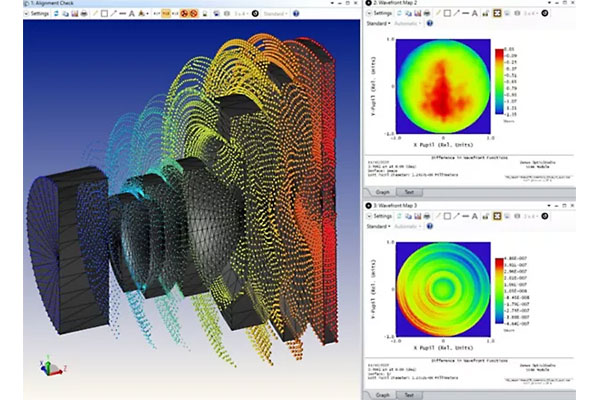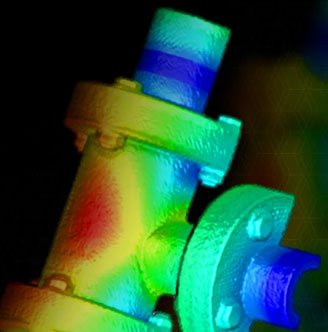Editor’s Pick: Accelerate Multidisciplinary Simulation
Ansys 2023 R1 update focuses on speed and capacity improvements, Ansys says.

Ansys 2023 R1 offers across-the-board speed improvements, with many new software utilities supporting the use of multiple GPUs. Image courtesy of Ansys.
February 8, 2023
Ansys has released Ansys 2023 R1, the company’s update of its portfolio of products for engineering design, simulation and analysis. The update focuses on speed and capacity improvements, yet many new features are scattered through the product line.
The company says the new release “amplifies the benefits of simulation by supporting collaborative, model-based systems engineering workflows, and expands integration of artificial intelligence and machine learning.”
The Structures collection allows users to perform more predictively accurate and customizable simulations, the company says. For example, Ansys Mechanical enables users to leverage artificial intelligence and machine learning to determine the computational spend and time required to run a simulation.

Ansys Fluent can now be run on multiple GPUs, which Ansys says “substantially reduces solve time and total power consumption.” Fluent also features new support for species transport, non-stiff reaching flows and enhanced numeric for large eddy simulation (LES).
Ansys Gateway Powered by AWS now offers design teams the ability to create or resize virtual machines and HPC clusters quickly, while streamlining access for teams with more flexible cloud subscription and single sign-on features.
The company says there are improvements across the software collection in the use of simulation product data management (SPDM) and model-based systems engineering to support engineering efficiency and “intelligent workflow automation and collaboration.”
There is a new “one-click” optimization for simulation toolchains in Ansys optiSLang and Ansys ModelCenter. Fluent users can also use optimizations created in optiSLang, and there are new ways to involve Ansys Minerva for SPDM in the process.
Ansys Electronics allows acceleration of finite-sized antenna array simulations by adapting individual 3D component cells in parallel. Ansys says “this remarkable technology is unmatched in the industry and will empower organizations designing antennas for satellite communications, automotive radar, and aerospace applications.”

Other notable additions include:
- Ansys Granta now offers materials, data and tools in the cloud.
- Ansys RedHawk-SC and RedHawk-SC Electrothermal offer new thermal analysis methods that use half as much computer memory. RedHawk database sizes are now smaller, which the company says also increases simulation efficiency.
- Ansys Discovery now includes automated fluid-solid thermal analysis.
- The Ansys Additive collection has various feature improvements and new materials including stainless steel 316L.
- Ansys HFSS Mesh Fusion enables simulation of larger models not possible previously.
- Ansys embedded software solutions offer several new features of interest to defense and aerospace engineers.
The Ansys 2023 R1 release is now available to users directly from Ansys. For more details on Ansys 2023 R1, click here.
Sources: Press materials received from the company and additional information gleaned from the company’s website.
More Ansys Coverage
Subscribe to our FREE magazine, FREE email newsletters or both!
About the Author
DE’s editors contribute news and new product announcements to Digital Engineering.
Press releases may be sent to them via [email protected].






